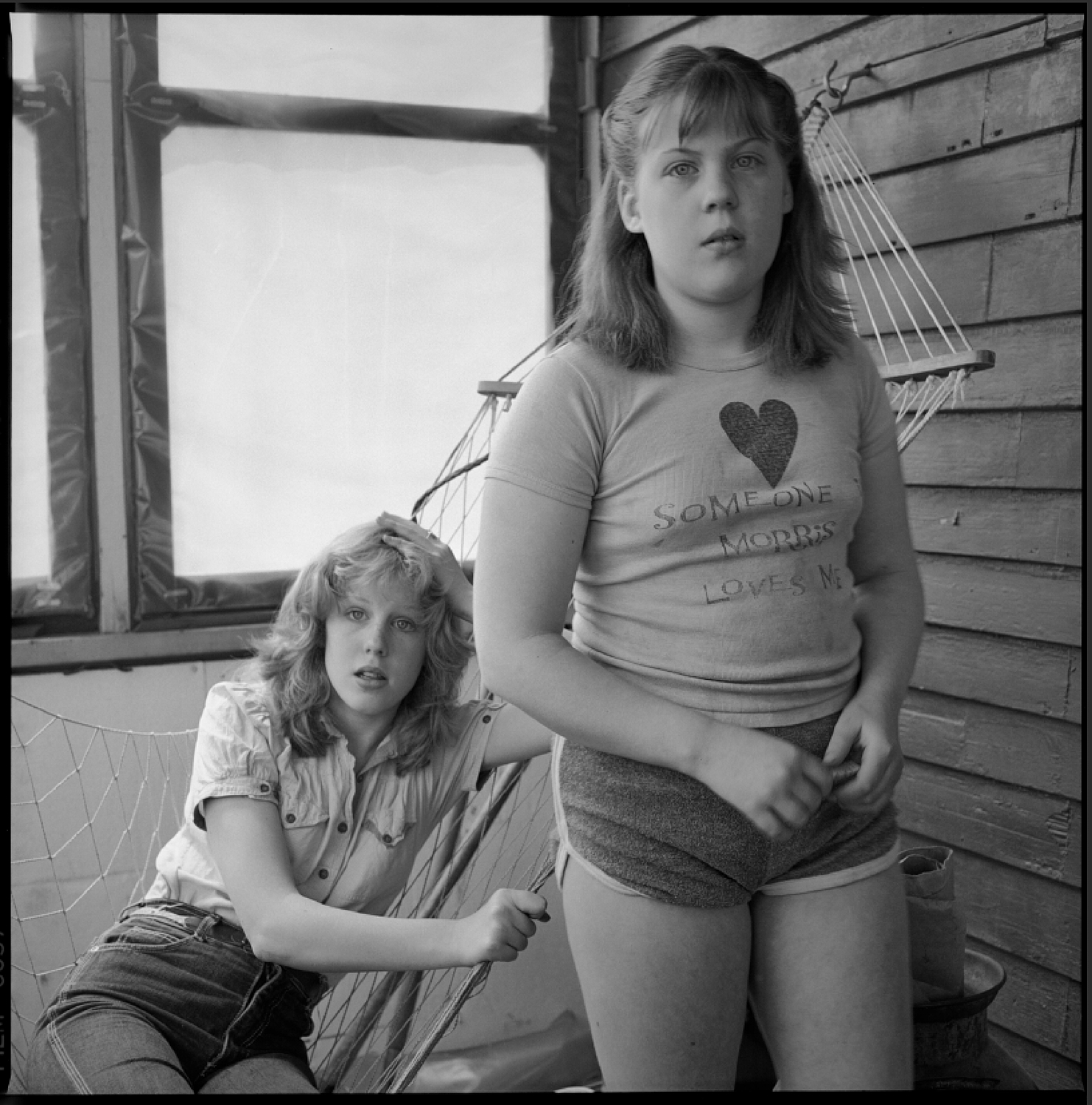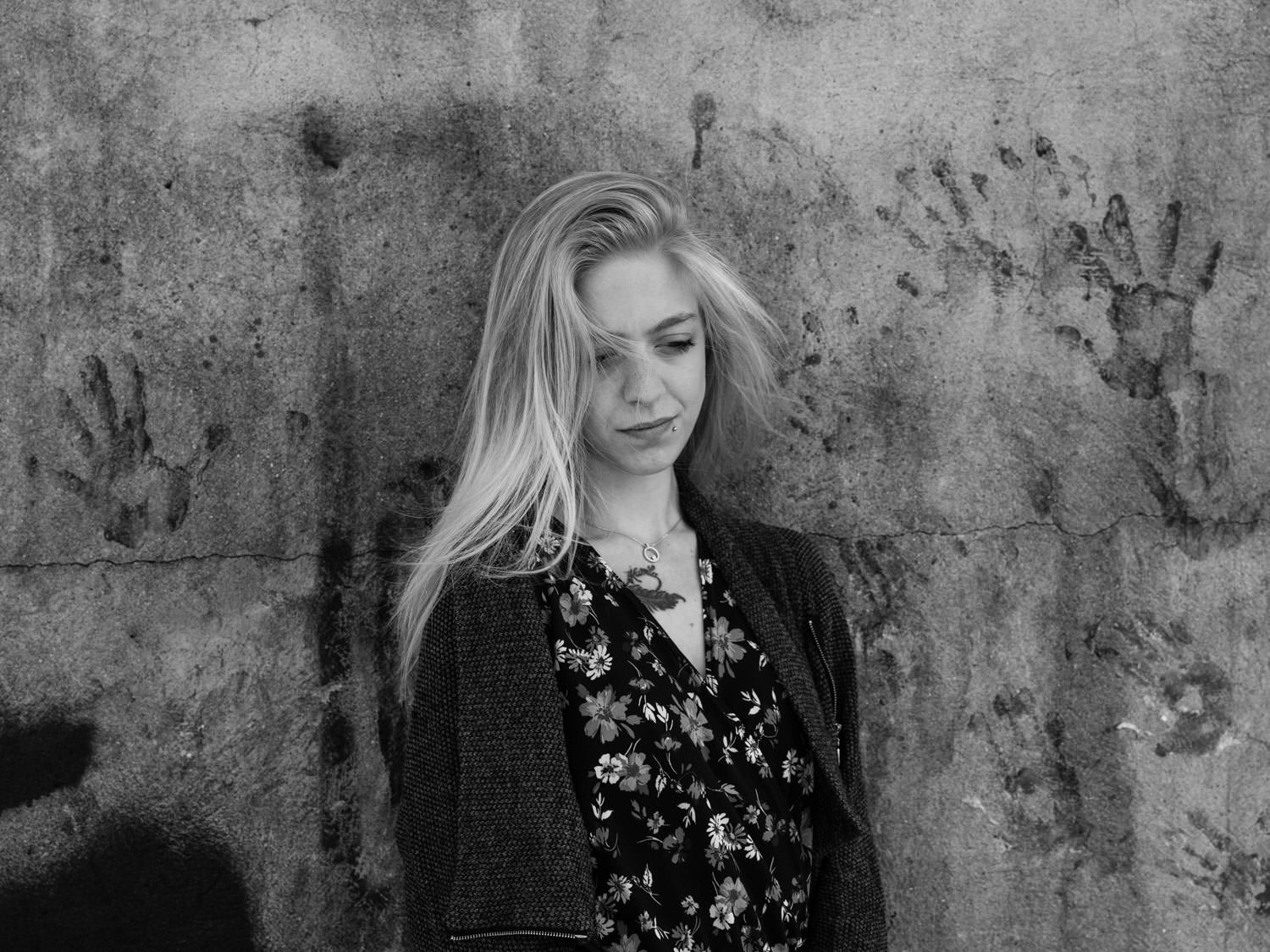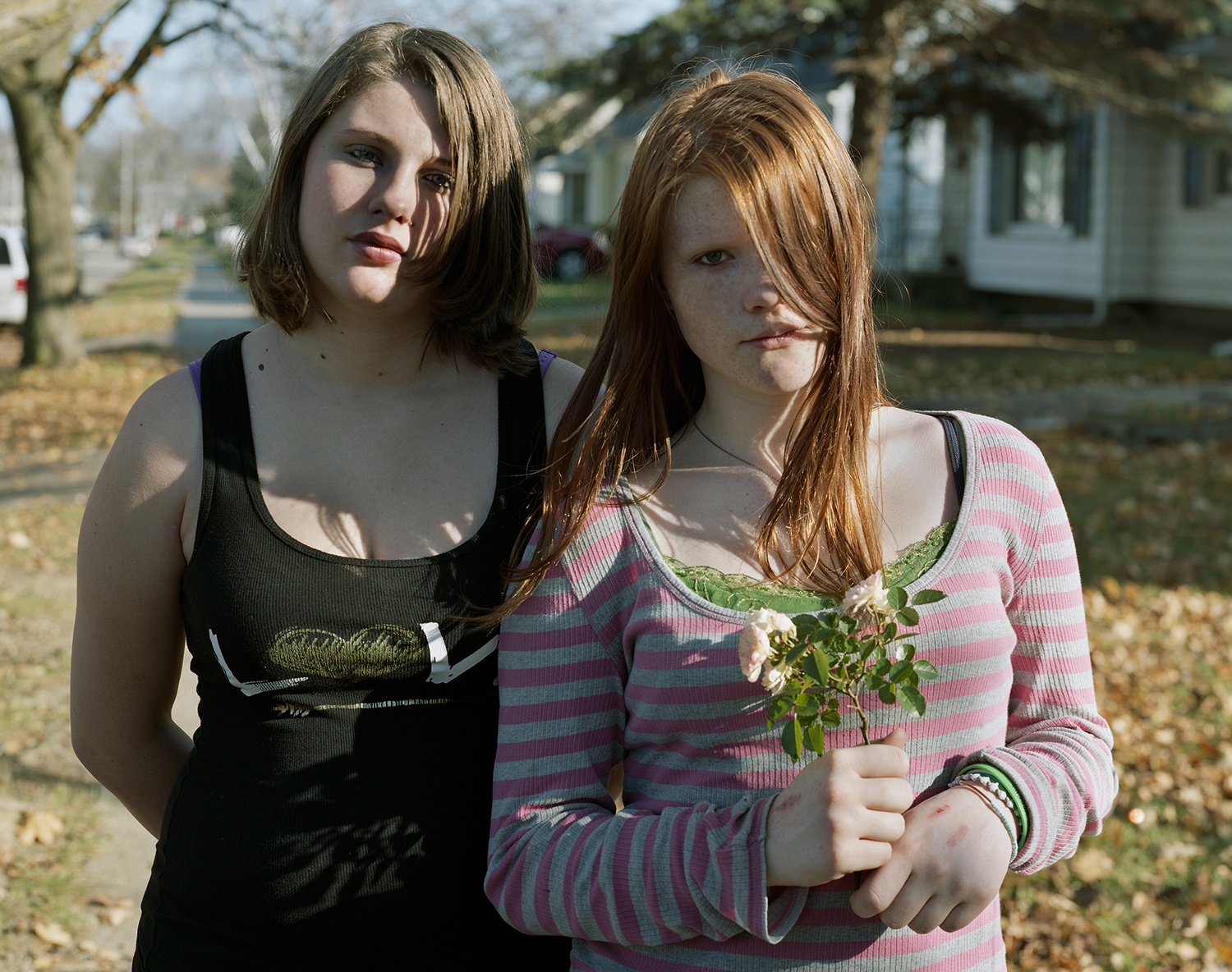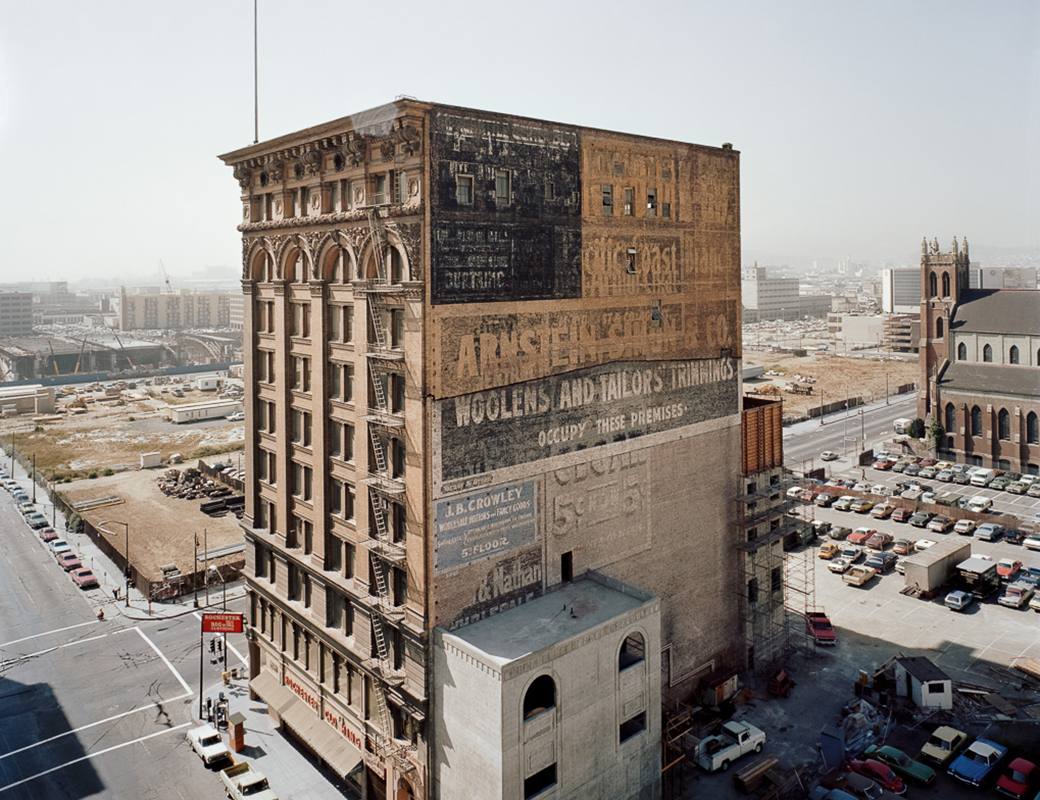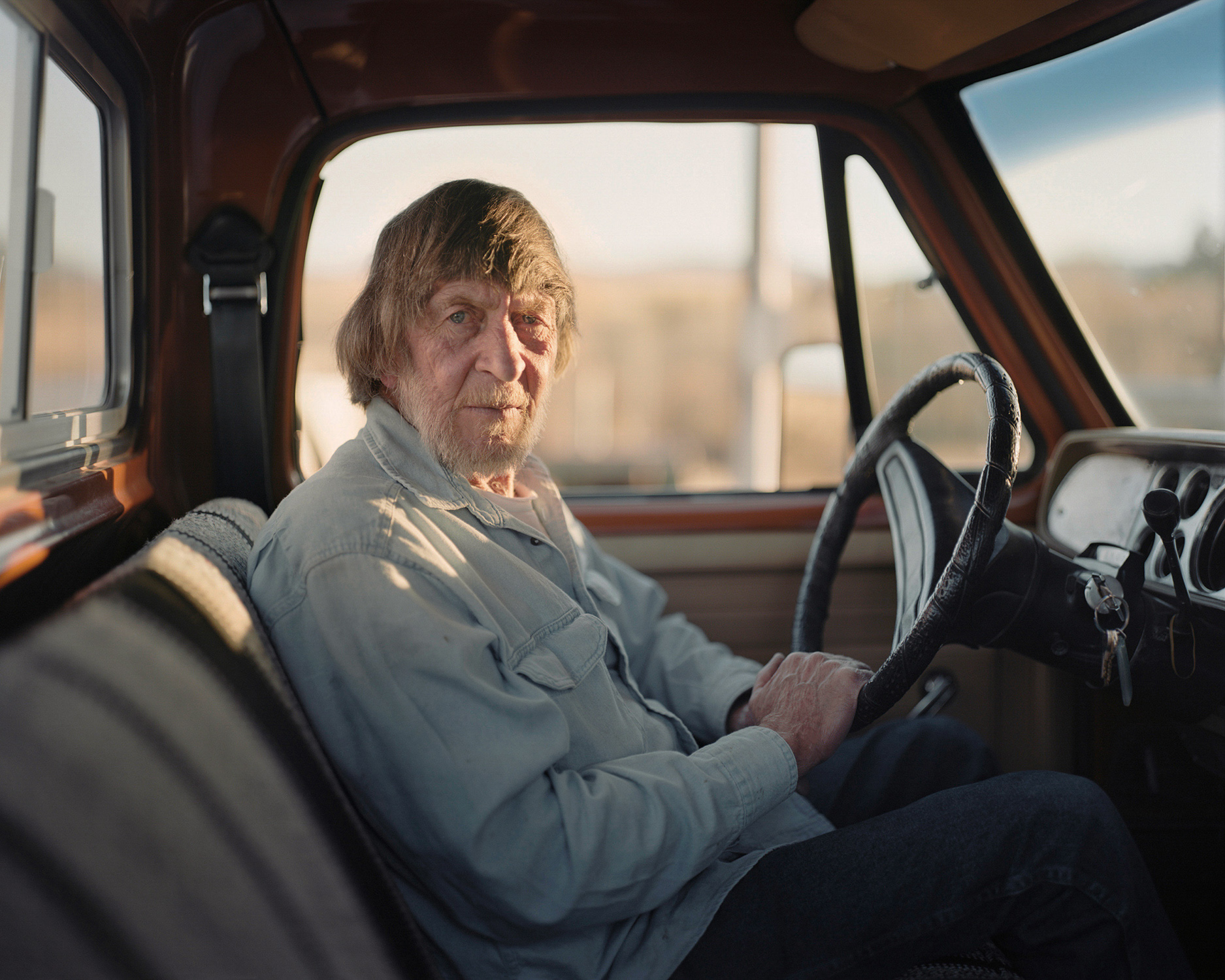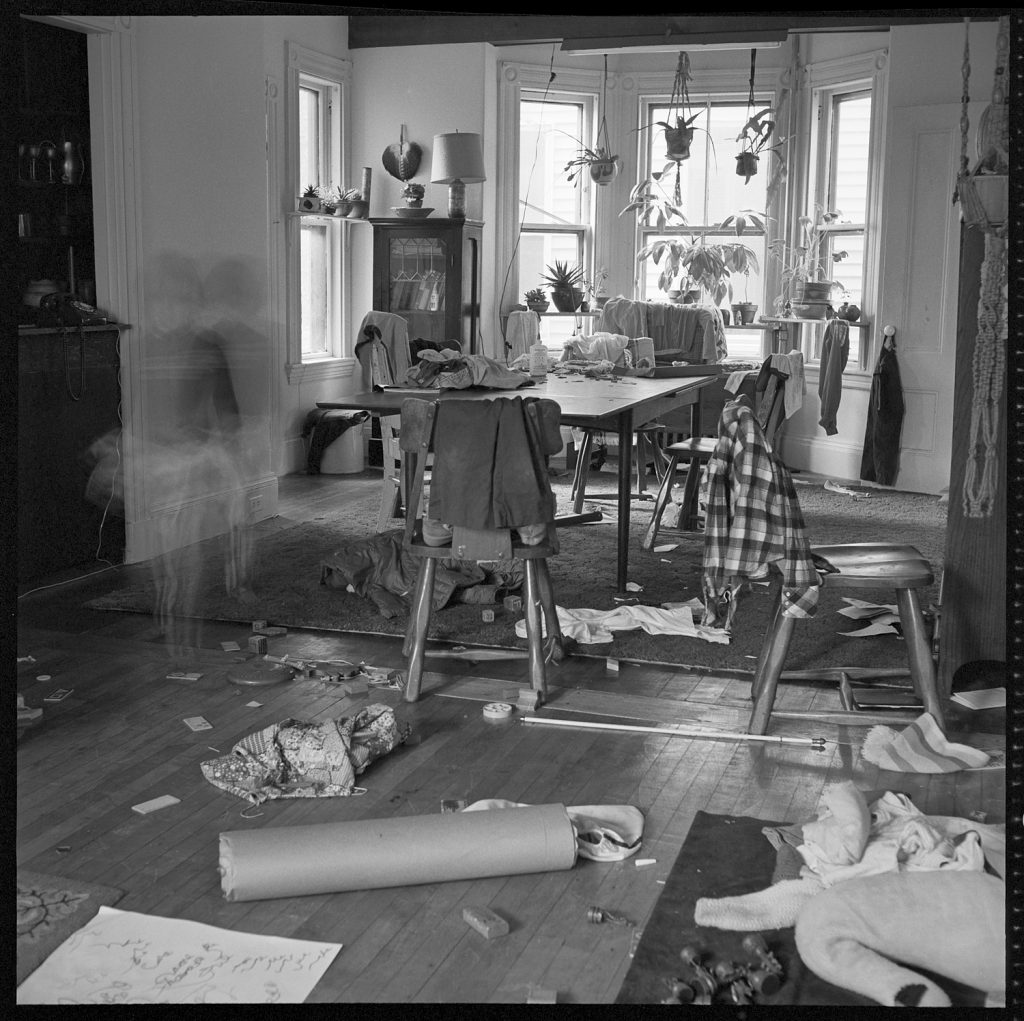
Can you tell us about your series Pleasant Street? Why did you decide to photograph your family members? What did it get you at the time? Was it also to mark a period that seemed to be complicated for you when you arrived in this new neighborhood?
When I moved to Cambridge in 1979 with my four children, we moved into a dilapidated apartment in a neighborhood that was foreign to a family that had been living in the countryside of New Hampshire. I had never lived in a large city. I was enrolled in a graduate program at the Creative Photo Lab at MIT. It took me about one semester of trial and error to start photographing my self and my children in a serious way. Once I figured out that I would not have time to roam the streets or the country to find interesting images, it became clear to me that what I was experiencing was my most potent subject. I became my own documentarian.
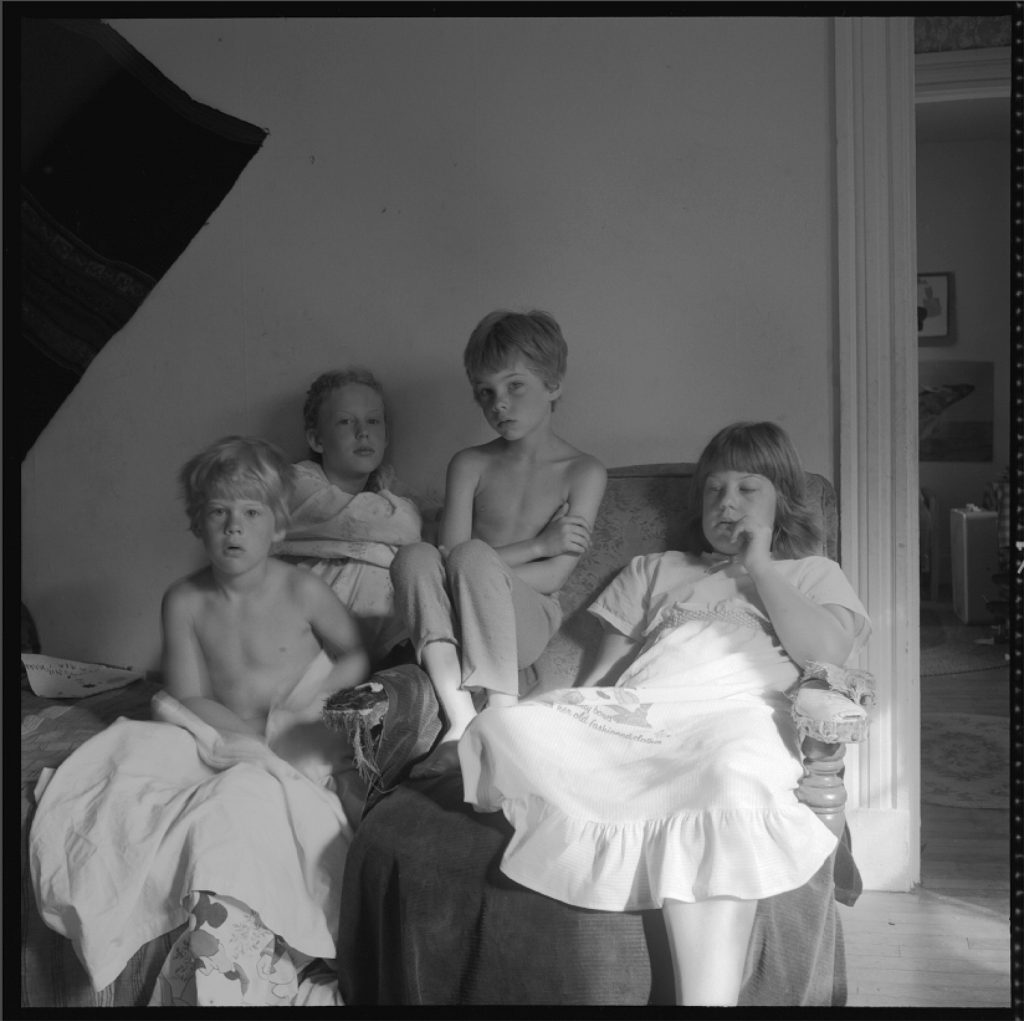
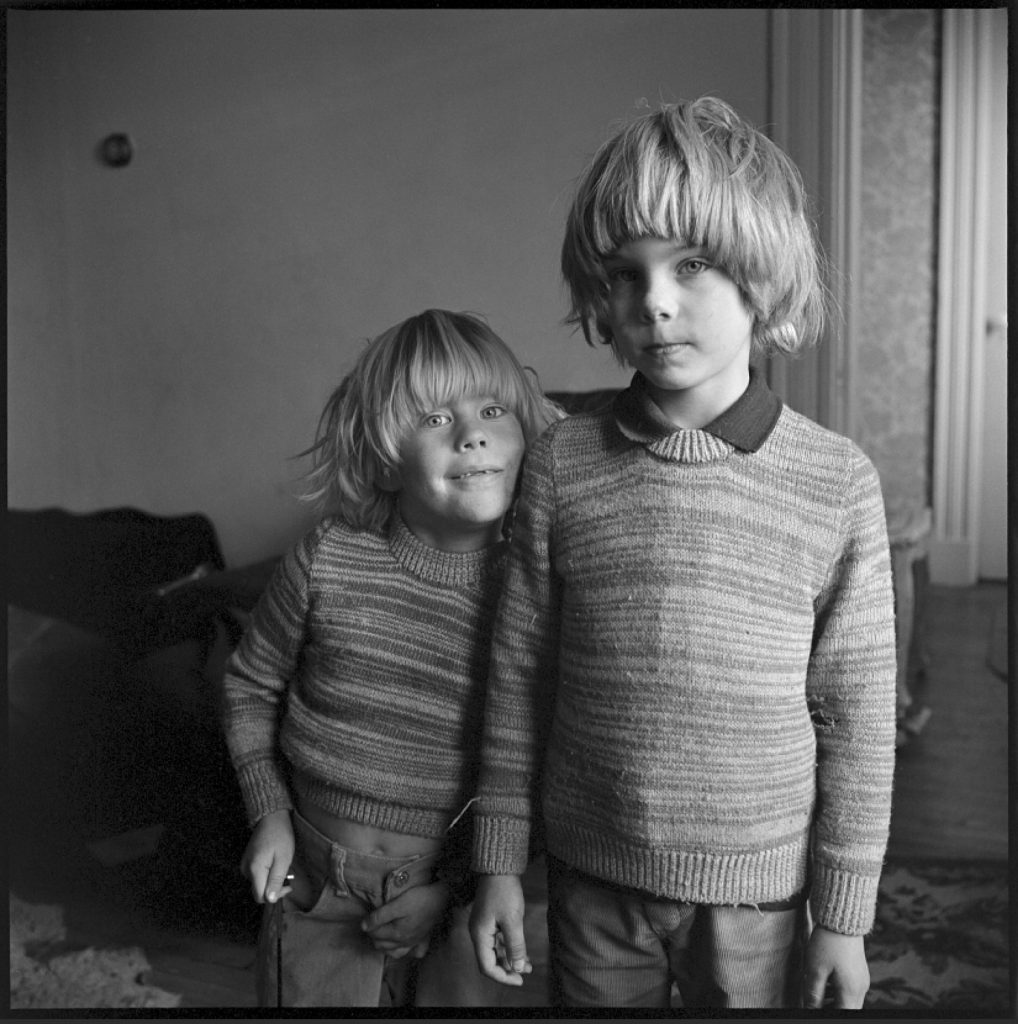
« I started making the self-portraits as a therapeutic exercise. Including the children and Rob was an extension of that exercise. »
How did your children feel the camera? Did they understand your project?
I started making the self-portraits as a therapeutic exercise. Including the children and Rob was an extension of that exercise. We were all in it together. Having my home be my studio meant everything. The kids were collaborators in that they knew what the pictures would be used for…public display. They were at the small openings and could see themselves on the wall from the beginning. We didn’t talk about it much, we just did it. It is also our family album.

At the beginning of this project, did you want to keep these pictures to yourself? At what point did you think you were going to share these photos?
There was only one self-portrait that was hard to look at and hard to share at first. Being a student, I knew I was making the photos to exhibit, but it took me a while to share that one photo. Once I did, I realized that my voice was key to the whole series. I remembered that we can only speak with authority about the experiences we know best. I knew I was being the photographer, the subject, and the mother.
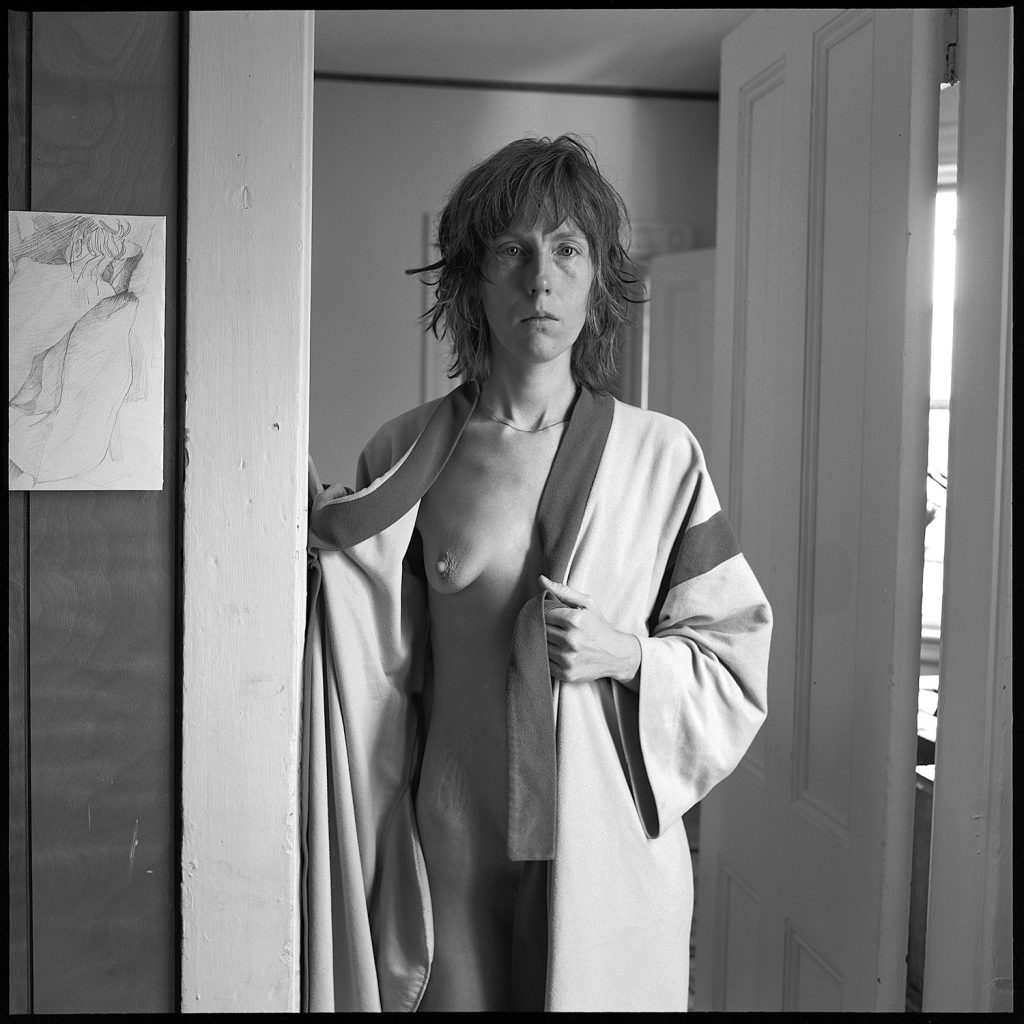
Are you continuing this series or did it stop at some point?
The series did slow down once the children moved away from home. If they came to visit, I would take pictures. Of course, having grandchildren gave me a license to take more photos. Occasionally I would take the camera to their home. At some point though, I knew they needed their privacy, too. Another stopping point was when Polaroid went bankrupt and ceased producing the film I used. I do take photos with the digital cameras available today, including the cell phone. Still figuring out what to do with that! At some point, the need to document as much as in the past changed for me. Some things come to an end.


What film and camera did you work with?
At first, I worked with a 2.5 Roliecord TwinLensReflex and Kodak Tri-x film. Quite often inside the house, I needed a tripod with a 1/15 sec. exposure. I’m afraid I was not a really great technician in the early days and didn’t get the best results from film exposure and development. I used 35mm cameras of all kinds, too, for more casual picture taking.
When the Polaroid Gallery offered me an Artist Support Grant of film, I chose Polaroid Type 55, a 4×5” positive/negative instant film. I had to buy a camera to use it with and chose a Crown Graphic press camera, like the one Weegee used. Most often it was perched on a tripod, but it could be handheld outside or with a flash. The film speed was around 60 ISO. The focusing on the camera was tricky and I knew the framing was not exact. But I got a really beautiful negative in about 30 seconds that could make very large silver gelatin prints.
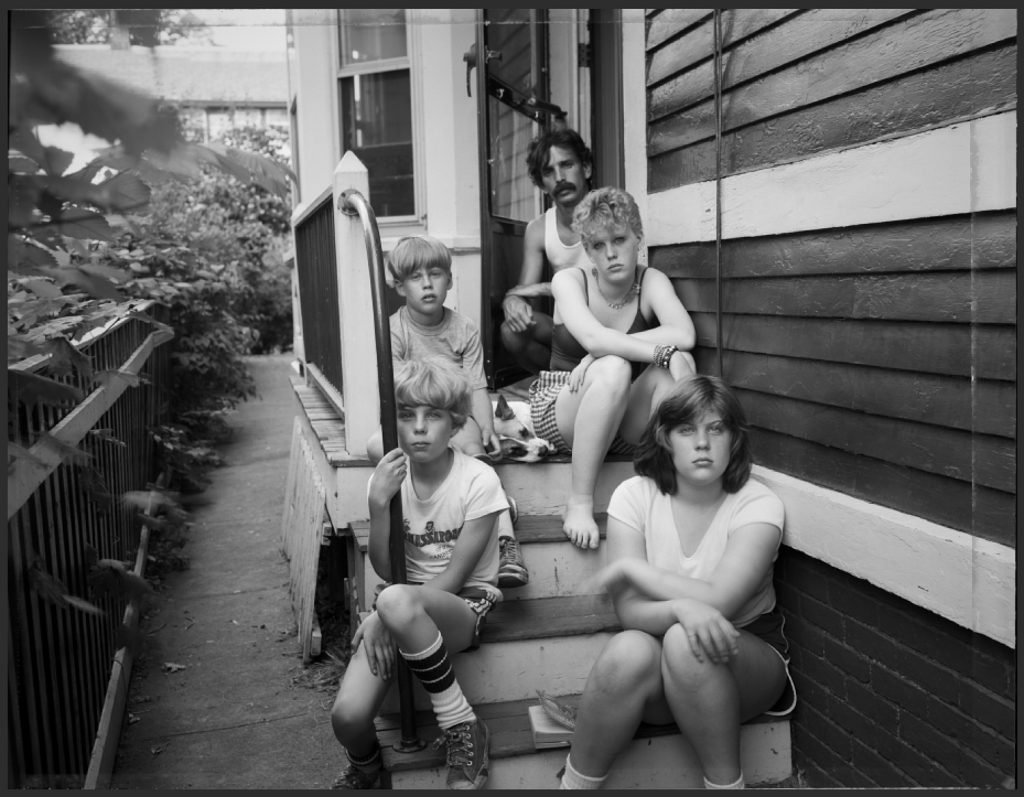
How do you see these photographs today and in this period? And how do your children look at their portraits today?
Good question. The photos have so many memories attached to them. Sometimes it is a difficult time, sometimes a birthday. Both sad and happy times. I enjoy the beauty of them. I always ask The children for permission when doing a project or exhibit where their image will be made public. I think of the photos as their family album, even if the photos are not the standard family groups or occasions. We probably have differing memories attached to the photos, but there is some truth in each one. I think that is the important part. They are very happy with the book!

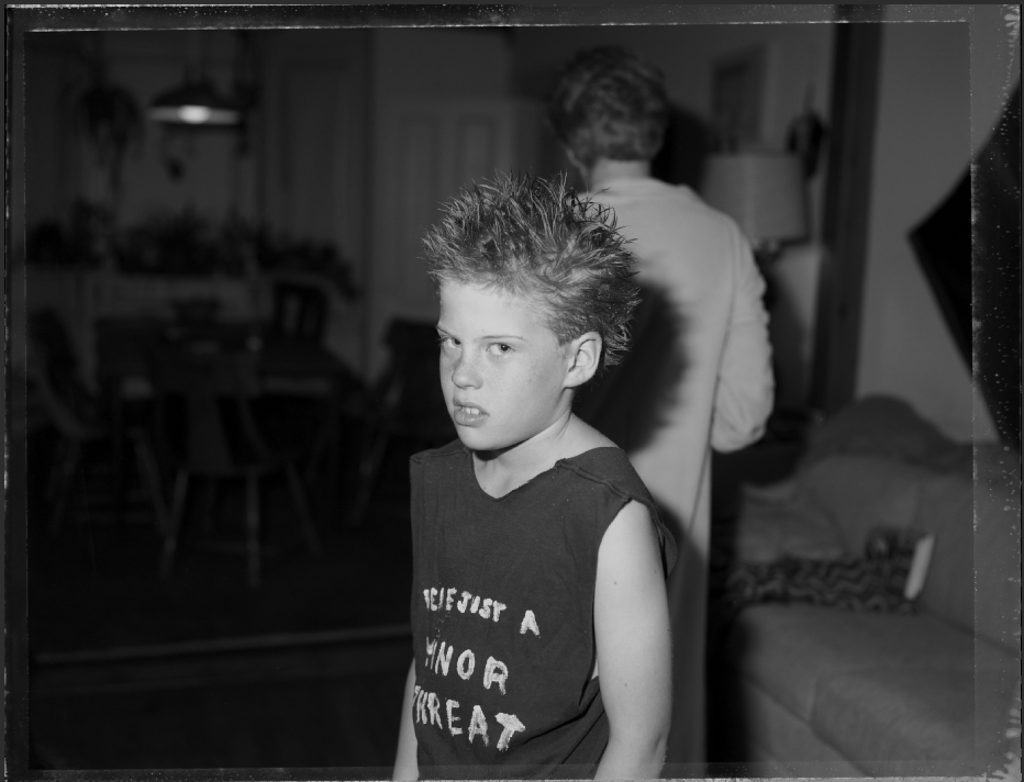
« The portraits of them are moments that have turned into memories that I can literally touch. »
Why do your favorite subjects in photography revolve solely around photography? Is it the way for you to work on suffering ? to realize a work of memory? To externalize certain things that you could not otherwise?
The answer is both simple and complicated. The practical reason is that my “self” and my home were right there under my feet and eyes. The more complicated reason was that I was trying to survive a difficult divorce and the emotional trauma that we felt. I went from being a mother of four children to also being the breadwinner. Instead of keeping a written diary or a therapist, I used the camera and trained it on my self as a way to confront the pain of many losses. I could do that to myself with revealing photos. I did not do that with my children. The portraits of them are moments that have turned into memories that I can literally touch. Not all the moments are happy, but they are loving.

Can you tell us about the collaboration with Stanley/Barker for the edition of your book? How did it happen, what were the stages of realization?
The collaboration with Stanley/Barker came about in a miraculous way. I was searching for my email last July (2019). I came across their note and didn’t recognize the sender. I opened it, and they were interested in working with me. Unusual, I thought. So I checked out their website. Legit publishers. Then I noticed a second email from them. I checked the dates, 2017, 2018. Of course, I replied immediately and apologized for not responding, but I still have no idea how the first email got lost in my system. Amazingly, they were still interested in publishing a book of my work. By July 2020, we have a book that we are all so happy with!

Do you continue photography? Do you have new projects?
I have several projects that need to be finished. One about my father and one about my mother-in-law. Both are now deceased. I will always want to take a few photos to mark the times and some of the life events. But I don’t feel the need to make new projects right now. I am concentrating on looking back through the old work with different eyes!

« women who were both mothers and photographers, trying to see how they balanced their desires for a career and their role as nurturers of a family. »
Did you have an external inspiration that impelled/inspired this project?
So many that it is hard to pick! When I started at MIT, I concentrated on women who were both mothers and photographers, trying to see how they balanced their desires for a career and their role as nurturers of a family. I looked at well-known photographers as well as relative unknowns. Julia Margaret Cameron, Gertrude Kasebier, Imogen Cunningham, Elsa Dorfman, Melissa Shook, Bea Nettles, Judy Gelles. Even Dorothea Lange photographed her grown sons and her grandchildren later on. These women all had different solutions to their roles and it is reflected in their photographic work.
Of course, there were men who had families that appeared before their cameras, such as Jacques Lartigue, Emmet Gowin, Edward Weston, Robert Frank They were influences as well, but not the focus for my research. We all photograph our closest relationships. Some make it more public than others. Family is a very rich vein of emotional inquiry.


A top 5 photographic book?
So influential in many different ways:
The Lines of My Hand, Robert Frank
Pictures from Home, Larry Sultan
Ballad of Sexual Dependency, Nan Goldin
Nicaragua, Susan Meiselas
A Way of Seeing, Helen Levitt
Interview by Valentine Zeler
Photographer’s Links: Website – Instagram – Moma
Photobook « Pleasant street » by Judith Black published by Stanley / Barker available here.

